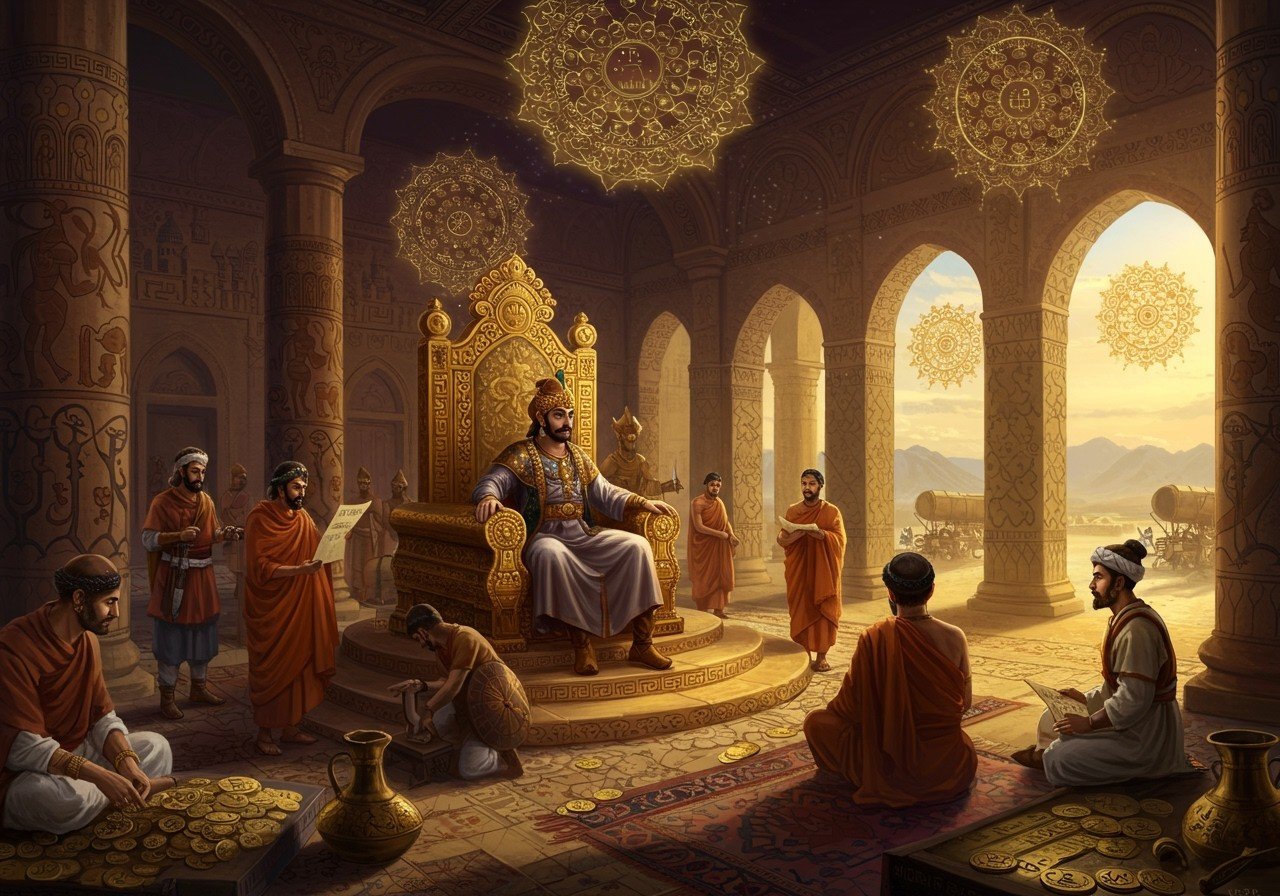
The Kushan Empire, a powerful force in Central Asia between 50 and 250 CE, significantly impacted the political, cultural, and economic landscape of Inner Eurasia. Originating from the Yuezhi tribe, the Kushans established a vast empire spanning from modern-day Tajikistan to Northern India. This article delves into the socio-political dynamics of this fascinating civilization.
Historical Overview
The Yuezhi, migrating from the Chinese borderlands, conquered Bactria in the 2nd century BCE, eventually forming five chiefdoms. One of these evolved into the Kushan dynasty, consolidating power and expanding its territory under Kujula Kadphises in the early 1st century CE. This expansion continued under subsequent rulers, most notably Kanishka the Great. The empire’s strategic location along major trade routes, including the Silk Road, facilitated cultural exchange and fueled economic growth.
Political Structure
The Kushan Empire operated under a centralized monarchy with the emperor as the supreme authority, often viewed as a divine ruler. Provincial governors, known as satraps, administered local regions while adhering to imperial policies. A standardized coinage system, introduced by the Kushans, promoted economic stability and facilitated trade. The empire maintained diplomatic ties with major powers like the Roman Empire, China, and the Parthian Empire.
Social Structure
Kushan society was remarkably diverse, reflecting its multicultural population comprising Bactrians, Scythians, Indians, and other groups. In contrast to contemporary Indian societies, the caste system within the Kushan Empire was less rigid, allowing for greater social mobility. The influence of Buddhism promoted values of compassion and inclusivity, contributing to a relatively harmonious social environment. This era witnessed a flourishing of art and architecture, characterized by a fusion of Greek, Persian, and Indian styles.
Religion and Culture
Religion held a central place in Kushan society. The Kushans were patrons of Buddhism, constructing monasteries and stupas that served as centers of learning and cultural exchange. Demonstrating religious tolerance, they also practiced Zoroastrianism and Hinduism. Kanishka’s convening of the Fourth Buddhist Council played a crucial role in codifying Buddhist teachings.
Economic Foundations
The Kushan economy thrived on agriculture, trade, and skilled craftsmanship. The Silk Road facilitated the exchange of goods like silk, spices, and precious metals. The empire’s strategic position established it as a vital commercial hub connecting East and West. The introduction of a standardized coinage system, featuring gold, silver, and copper coins, streamlined trade operations.
FAQs
What distinguished the Kushan Empire’s social structure? The Kushan Empire’s social structure was notable for its diversity and the relatively flexible caste system, which allowed for greater social mobility compared to other societies of the time.
How did the Kushan Empire’s location affect its development? The empire’s strategic location along the Silk Road greatly contributed to its economic prosperity and facilitated cultural exchange with various regions.
Connecting with Kushan History through Poojn.in
Poojn.in, India’s leading cultural goods and services store, offers a unique opportunity to connect with the rich heritage of the Kushan period. Explore our collection of authentic items:
- Brass Idols: Discover beautifully crafted brass idols of deities worshipped during the Kushan era, allowing you to bring a piece of history into your home. These idols are meticulously crafted and consecrated according to traditional methods.
- Incense and Puja Items: Enhance your spiritual practice with incense and puja items reminiscent of those used in ancient Buddhist monasteries that flourished under Kushan patronage. Experience the scents and rituals that connected people to their faith centuries ago.
- Sculptures: Explore our collection of intricately carved sculptures reflecting the Indo-Greek artistic fusion prevalent during the Kushan period. These pieces serve as a reminder of the rich artistic heritage of the time.
Visit poojn.in today to explore our complete collection. For personalized guidance, contact our expert team at 91 7908548235.
Conclusion
The Kushan Empire’s socio-political structure demonstrates the complex interplay of centralized power, cultural diversity, and economic prosperity. Their legacy continues to inspire and inform our understanding of ancient civilizations and their lasting impact on the world. By exploring resources like Poojn.in, we can gain a deeper appreciation for the rich cultural heritage of this remarkable empire.
Further explore related topics on our blog:


